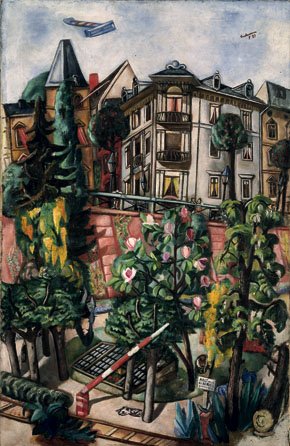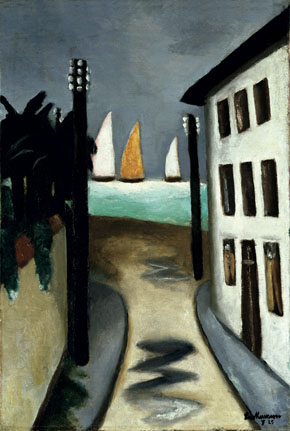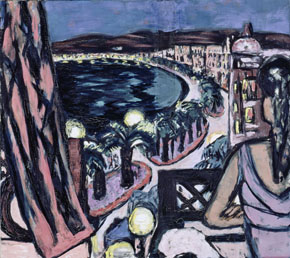| 
Max Beckmann (1884–1950)
Das Nizza in Frankfurt am Main, 1921
Öl auf Leinwand
100.5 x 65 cm
Göpel 210
Kunstmuseum Basel, mit einem Sonderkredit
der Basler Regierung erworben, 1939
Foto: Kunstmuseum Basel, Martin P. Bühler
© ProLitteris, Zürich
|
We are in charge of the press
relations in France for the Kunstmuseum Basel, Switzerland
Max Beckmann (Leipzig 1884 – 1950 New
York) is one of the titans of modernism, even though he saw
himself as the last Old Master. He never joined any of the
avant-gardist schools of the twentieth century, but the experiences
of Impressionism, Expressionism, New Objectivity, and abstract
art left their traces in his oeuvre. Beckmann was long perceived
as a typically German artist, and only in the past few years
has his importance been fully appreciated on the international
stage, with retrospectives in Paris, London, and New York.
Against the modernist tendency to dissolve the traditional
genres, Beckmann remained a lifelong defender of classical
genres: the depiction of the human figure—in the form
of portraits, mythological tableaus, and acts—the still
life, and the landscape. Famous as a painter of the human
condition, he also renewed the genre of landscape painting
with outstanding and haunting works that are virtually without
equal in twentieth-century art. The comprehensive special
exhibition at the Kunstmuseum Basel now turns the focus on
the artist’s oeuvre in landscapes, showing seventy paintings,
among them masterworks such as The Harbor of Genoa from the
St. Louis Art Museum and the Seashore from the Museum Ludwig,
Cologne, but also sublime works from numerous private collections
that have rarely been on public display.
|

Max Beckmann (1884–1950)
Kleine Landschaft, Viareggio, 1925
Öl auf Leinwand
52 x 35.5 cm
Göpel 244
Privatsammlung Deutschland
© ProLitteris, Zürich
|

Max Beckmann (1884–1950)
Promenade des Anglais in Nizza, 1947
Öl auf Leinwand
80.5 x 90.5 cm
Göpel 741
Museum Folkwang, Essen
© ProLitteris, Zürich
|
